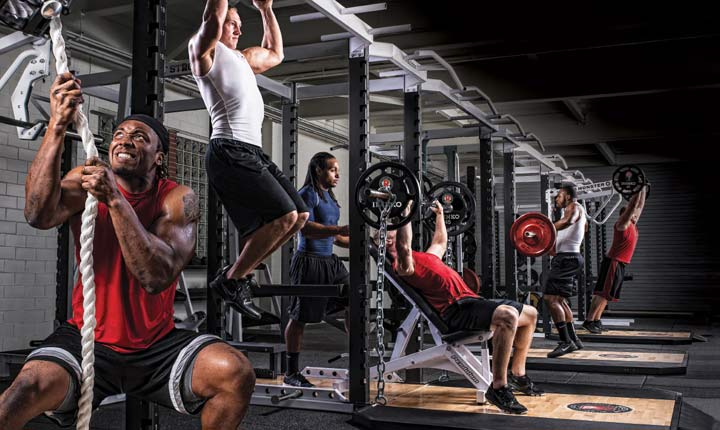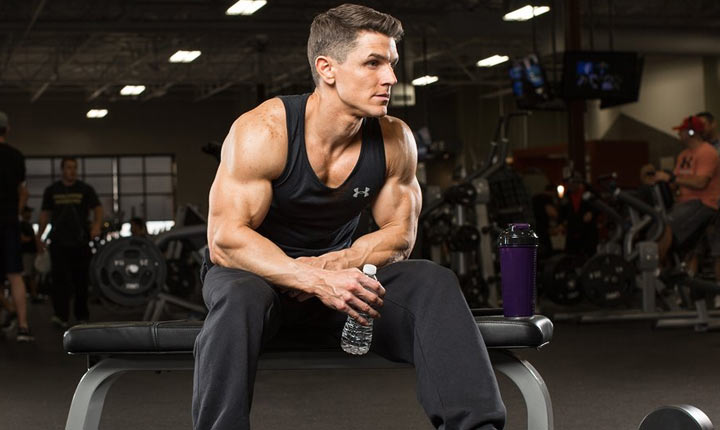Our Blog

Resistance Training Guide – 5 Parameters to Remember

Have you tried running on a watery surface? It’s tougher to run on it compared to the dry surface, thereby causing you to run slower and forcing you to put more effort to run faster, owing to the reason that the water resists more than the land. But why are we referring to this when our article is about the resistance training where we should talk about the muscles and exercises? Well, that’s because we want to explain how resistance works! In this example, when we put more effort, our muscles work harder than usual, ending up being stronger than it would have by running on a dry surface.
Did you get it? In simpler words, resistance workout or training is a form of training where some kind of force is working against you or resisting each of your movements to make you use more muscle power. And that is the reason why the world is always praising resistance training.
When the term, ‘Resistance Training’ pops out, almost everyone thinks about weight lifting but there are a number of other kinds of activities that can fall under the resistance training category including running with parachutes, dragging sleds, and bodyweight exercises.
So, in this resistance training guide, you will learn all the basics of resistance training and workouts. If you want to more, you need to consult a fitness expert. Starmark has always been there for providing you with the right information regarding different workouts and training.
What is Resistance Training Workout?
As mentioned earlier, resistance training is basically the exercises which make our muscles work against an external force (i.e. resistance), resulting in increased and improved strength, hypertrophy, endurance, and power. Everything that causes muscles to contract like exercise tubing, bricks, dumbbells, water bottles, your own body weight, and many others can be used during the resistance training. However, along with the resistance training, it is recommended to get maintenance programs in order to enjoy long term health benefits.
What are Some Resistance Training Workouts?
Well, there are many ways you can make your muscles strong. Whether home or gym, you can practice the following types of resistance training. Take a look:
- Weight Machines: Equipment with an adjustable seat and handles, which are attached to hydraulics or weights.
- Free Weight: Old school strength training with barbells or dumbbells.
- Resistance Bands: Portable in nature, these are rubber bands of giant size, used in many workouts for constant resistance throughout a movement.
- Your Own Body Weight: Chin-Ups, Push-Ups, Squats, and many other exercises. Body weight exercises are best if you are traveling or at work.
- Medicine Balls: Balls with Weight.
Most Important Parameters of Resistance Training
Resistance training, like any other exercise, is all about precision. A little mistake can be lethal for your health. Thus, we are mentioning a number of parameters that are needed to be followed during your resistance training workout session.
Choose the Correct Exercise
Every exercise has its perks and drawbacks. Similarly, some exercises can help you build muscles way better than the others. This is the reason why you should always be aware while choosing an exercise. In order to reap the maximum benefits from the resistance training, you need to choose the exercises that are multi-joint in nature. By multi-joint, we mean the exercises that work on more than one joint. In the multi-joint exercise, muscles that are attached to the joints either lengthen or contract.
Multi-joint exercises are way more beneficial than the single-joint workout but also are more difficult! For instance, if you compare dumbbell fly with the bench press, you would find that the single-joint exercise, dumbbell fly is easier to perform but multi-joint workout, bench press (works on elbow and shoulder joints) is more difficult. But at the same time, the latter is way more effective than the former.
It’s good to start with a multi-joint workout for warm-up and if you have plans for single-joint exercises, keep them for the end of your workout.
Choose Proper Weight

Once you are done with the warm-up, you need to pick a weight that helps you reach your target rep, having you in a good condition. By good condition, we mean completing the rep without having to cheat the weight up or something like that. That’s neither a clean rep nor healthy for you. In order to complete the target reps in good forms, you have to pick the right weights or you may not ever finish the target reps!
If you are a beginner, don’t jump into the heavy weights. Use such weights that allow you to reach your target reps in good form for the first couple of weeks to get habituated with the strength and stamina it requires. After that, you will become more coordinated and feel the extra strength in you. Once, you are adapted to the moderate rep ranges, you can, then, challenge yourself for moving to the heavier weights.
The key mantra: Never lift heavier weight at the expense of your form.
Do Multiple Sets

Multiple sets of an exercise are one of the key parameters when it comes to resistance training. However, you should not count the sets in warm-up because, as you can see, it’s not actually an exercise. You are just warming up your muscles and tissues to get ready for the main job! However, this does not mean that you can just skip the warm-up part to get straight into the main exercise. The warm-up helps in making your body ready for the next big tasks. Without warming up, you can never reach your potential max weight.
Now, the question is, if warm-up reps are not counted, how many sets should get the job done? Well, a single set is also beneficial but if you truly want to reap the benefits of the resistance training workout, you need to do 3-4 sets. That will tune your muscles way finer than one single set.
Take Rest Between Sets

Muscle failure is quite normal in the workout. By design, muscle failure happens when your muscles reach to the most extended form and are unable to complete another rep in the good form. With the right weight chosen, the muscle failure occurs after around 8-12 rep range. Your muscles need to clear lactate and hydrogen ions (metabolic byproducts) as they fatigue during a set, which requires a little time, around 90-120 seconds. While the smaller body parts like arms and calves would take a shorter time to recover, the larger muscle groups like back and leg may take a little longer. Then, how to know when it’s good to go! Well, you can understand when you can catch your breath and feel good to go again.
Go the Extra Mile

So, if you keep exercising properly, have healthy food, get a good supplement, and rest properly, it pays off by letting you have the growth in muscle size and strength. Along with the increased strength and bigger muscle fibers, you would be able to do more than you used to do at the very beginning. Instead of doing 10 bicep curls, you may do 12 now or even 13-14! But instead of doing 13-14, one smart way is to add more weights in the bar in order to take your resistance training to the next level (since you are putting more resistance from now on). Now, complete your target range with the increased resistance. The idea is to get out of the comfort zone and make improvements on a regular basis.
Conclusion
So, this is all about resistance training. You need to remember all the parameters that we have mentioned in order to reap the maximum benefits from this outstandingly working exercise technique. Resistance training is the best way to make yourself stronger and more durable. So, follow these guidelines and start your workout. However, we would suggest taking advice from your trainer or a reputed multi gym before beginning the training since they would better understand your health and requirements.







